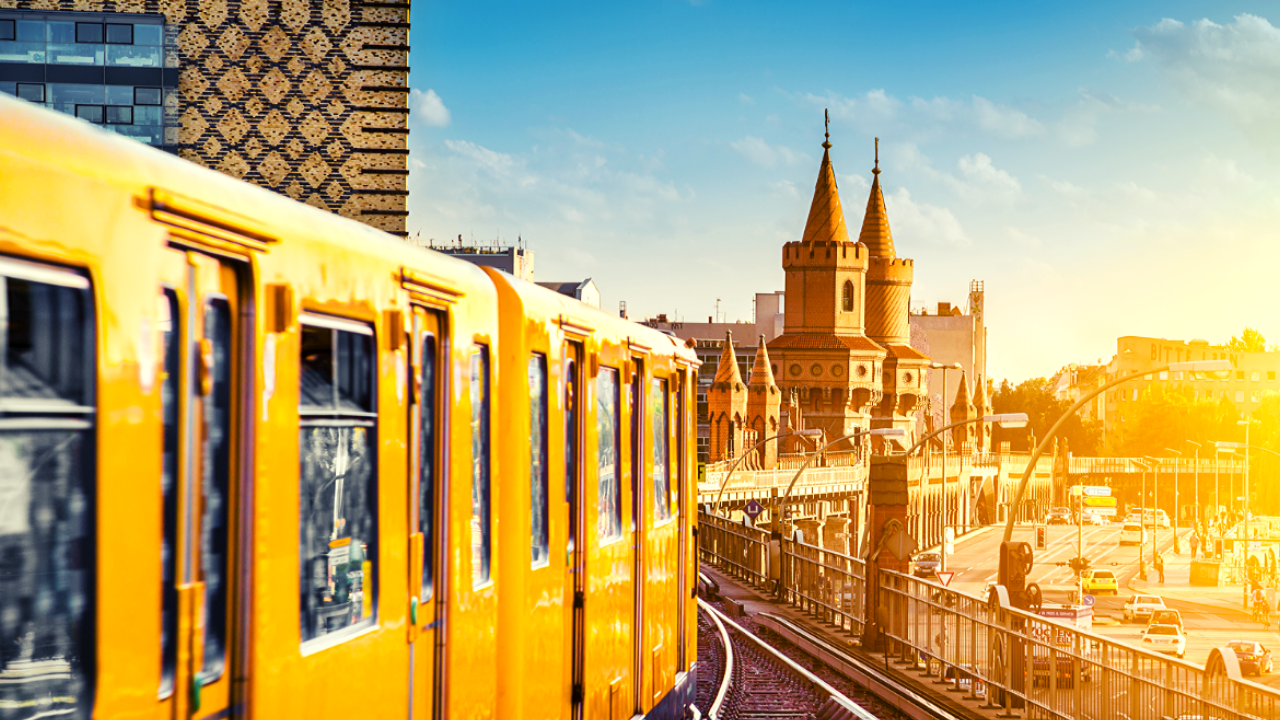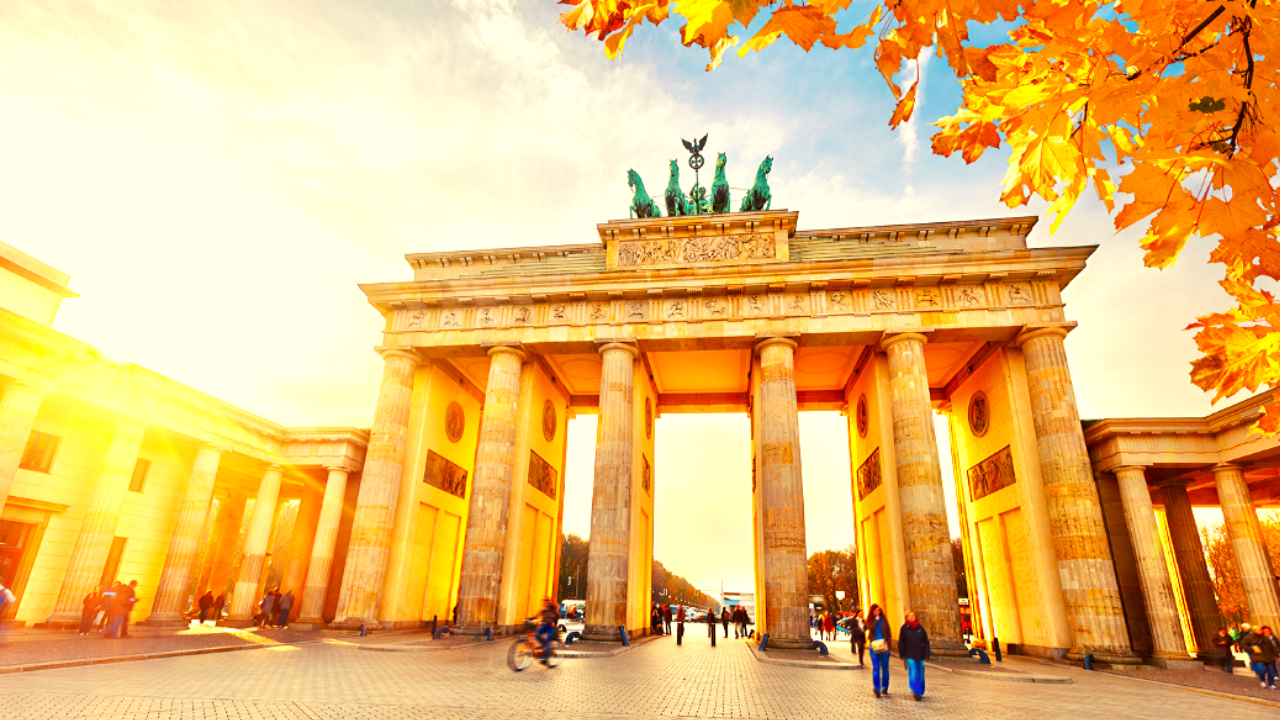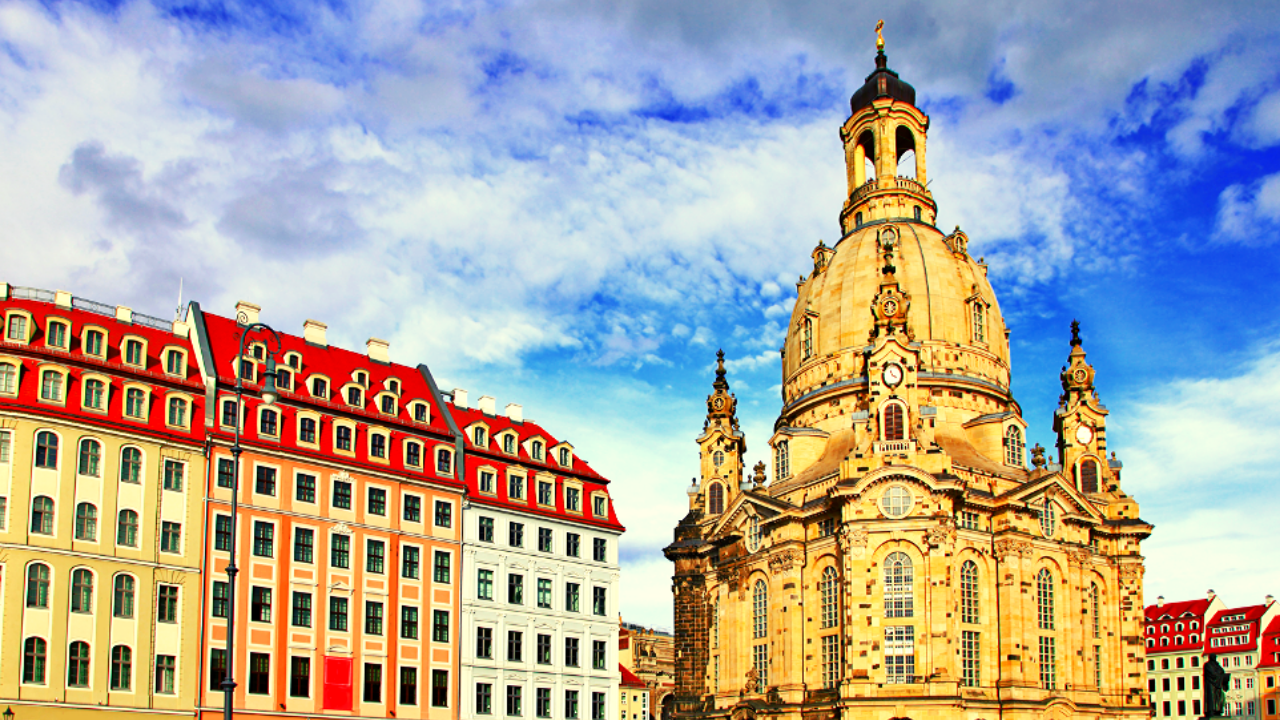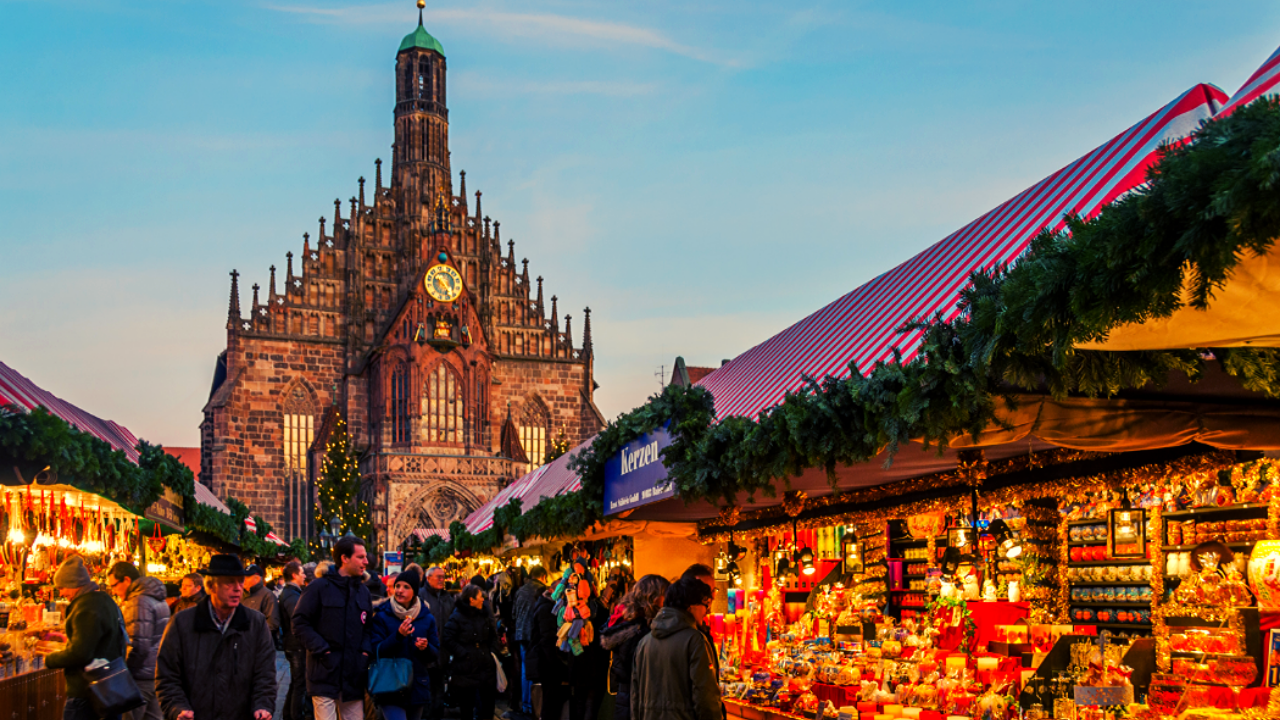As the birthplace of several of the world’s most illustrious names such as Martin Luther, Beethoven, and Albert Einstein, Germany packs a lot of greatness into its relatively tiny frame. As if the long list of genius and world-famous people wasn’t enough to draw tourists to this land, Germany also has an abundance of attractions to pull in enormous crowds of visitors. The stunning scenery, the fascinating culture, and the positively pulsating metropolises – all these are yours for the taking (or the viewing) if you decide to visit this realm of the mighty and the exalted. Below are all the things you’ll ever need to know for your trip to Germany:
Getting To and Around Germany
Before you can even think about packing your bags for this trip of a lifetime, you need to attend to some necessary paperwork first. At the top of the list is the need for a visa to legally step foot in Germany. Generally, nationals from most members of the EU are only required to present their passport or national identity card in order to get into, remain, and work in the country. US citizens who plan to visit and traipse around the country as vacationers for a period of up to 3 months can do so with only a valid passport. The same holds true for the citizens of the following countries: Australia, New Zealand, Japan, Israel, Poland, Switzerland, and Canada. It is also good to remember that one’s passport should have a minimum of four months validity from the target date of exiting the Federal Republic of Germany.
The Schengen Visa was named after the Schengen Agreement that went into place in 1995 and obliterated border controls among the countries that signed the treaty and carried out its stipulations. You should take note of the countries that did sign and implement the Schengen Agreement, as not all members of the EU did, and other Schengen members aren’t even a part of the EU. Schengen members include Switzerland, Iceland, Norway, Liechtenstein, and the European Union (with the exception of Romania, Bulgaria, Ireland, Cyprus, and the United Kingdom).
If you’re a national from a country not listed as part of the Schengen members or the few countries with the 3-month travel privilege, then you need to apply for a Schengen Visa, which will be valid for vacations summing up to 3 months. This shouldn’t be much of a hassle; just be sure to check with the consulate or embassy of your main destination for the latest information. No matter what your nationality, legal residency in any of the Schengen countries eliminates the need for a visa.
Once the issue of the visa is settled, you’re a step closer to making your dream trip a reality. The next thing for you to accomplish is to make the travel arrangements. Do you want to fly to Germany? It’s entirely possible without having to spend a huge chunk of money. In order to grab cheap airline tickets, you need to have a great sense of timing. In general, you’ll be able to get huge savings if you book tickets well in advance. You could also get great bargains if you plan to travel during the lean seasons, the middle of the week, as well as in the early hours of morning or the late hours at night.
Among your many pals, the World Wide Web is your best friend when it comes to bargain hunting. Online travel agencies, major search engines, and even the airlines’ very own websites are the best places to start your search. Scour these sources, along with the more conventional media like newspapers, for the most inexpensive deals that will get you to Germany.
Getting to Germany by boat is also doable. Travemünde, Lübeck, Rostock, Kiel, and Sassnitz make up the list of the country’s major ferry ports, all of which have services to the Baltic states and Scandinavia. Buying two one-way tickets will usually be more expensive than purchasing return tickets. Don’t be shocked at the fluctuating prices. The rates change radically from season to season and may depend on the amenities available as well as the day and time you depart.
Land transport from the nearby countries is another viable option. Although getting there by bus is more economical than riding the train, it can be the inferior choice in terms of speed and comfort. Plus, even the bus fares can’t hold a candle to the budget airlines’ cheap airfares. However, if you absolutely can’t get a hold of cheap flights, if you reside in a place that is poorly connected through train or air travel, or if you’re leaving on a short notice, then buses are the way to go. Regular trains and European high speed trains are also worthwhile methods of getting into the country.
Once you’ve arrived in Germany, there are various ways to get around the country. If you plan on getting tickets for domestic flights, the following carriers can do the job: Lufthansa, Air Berlin, Cirrus Airlines, German Wings, Inter Sky, and a few others. The recent abundance of budget flights may be too tempting for you, but be sure that the ticket gets you to your exact destination. For example, don’t confuse Frankfurt-Hahn with Frankfurt. The former is actually about two hours away from the Frankfurt City by bus. Aside from plane travel, you can also get around by taking advantage of Germany’s speedy railway system. If you make bookings ahead of time, you can even save on the costs. The rail will most probably be your main means of transportation unless you plan on traveling by car.
The Best Time to Visit
The most opportune time to visit Germany depends on the kind of vacation you want, although you can take the trip practically any time you wish. Lots of people prefer to make the journey between the months of May and September. Despite the huge crowds, the astronomical lodging rates, and the clogged roads, the sunny weather of summer presents a truckload of possibilities. Outdoor activities are much more enjoyable, the cities are humming with the various festivals being held, and the beer is being constantly poured.
The period from October to early November and from March to May sees less people and generally pleasant climate. If you’re more into cultural activities and city life, then the months between November and early March may be the best time to experience Germany. Skiers will love the ski period from early to mid-December, which may extend until the snow melts in March.
Famous Tourist Attractions in Germany
Neuschwanstein, Bavaria
Phonetically read as new-swan-stone, this classic fairy tale castle is one of the world’s most renowned castles, if not the most famous one. Being one of Walt Disney’s inspirations for the well-loved Sleeping Beauty masterpiece, Neuschwanstein was designed in 1869 by King Ludwig II and brought to its fruition by a theatrical set designer. As Germany’s most photographed structure, you definitely do not want to miss out on a tour through the flamboyant and lavish interiors of this castle. Prepare to be amazed by the humongous crown-shaped chandelier lording over everything else in the Throne Room, the flashy man-made grotto, and the extravagant Minstrels’ Hall.
Brandenburg Gate, Berlin
Constructed in 1791, the Brandenburg Gate is Germany’s national symbol, perhaps more than any of the country’s other landmarks. In 1961, when the Berlin Wall was constructed, the gate was impassable and closed for about 28 years. Standing between East and West Berlin, the Brandenburg Gate came to represent Germany’s reunification after the wall was torn down in 1989.
The City of Weimar
In the East of Germany, you’ll be able to find a city in Thuringia that will satisfy all your cravings for culture – Weimar. The City of Weimar is the mecca of all German intellectuals. People who want to see where all those who mattered in German music, literature, philosophy, and art lived and worked flock to this place. Off the top of the list of former Weimar residents are Richard Wagner, Friedrich Nietzsche, Walter Gropius, Johann Sebastian Bach, Friedrich Schiller, Wassily Kandinsky, and plenty of other personalities whose fame reached all the corners of the world.
The Romantic Road
Romance is in the air in Germany. Who can resist walking through a heartwarming scenic route such as the Romantic Road? With sights of medieval towns dripping with charm, picture-perfect German sceneries, and genuine cultural attractions, the Romantic Road is just what lovers need to ignite a dying flame of love or fan the fires to greater heights. Even if you aren’t with a special someone, you shouldn’t miss the awe-inspiring highlights of this road.
The Cathedral of Cologne
As the only building standing amidst a city of ruins during the World War II bombings, you can almost imagine that this cathedral was somehow spared by the intervention of a higher being. One of the country’s most significant architectural structures, the Cathedral of Cologne is hailed as the world’s third tallest cathedral and took more than six hundred years to complete. You’ll definitely want to check out this gothic work of art, which was finally completed in the year 1880.
The Dresden Frauenkirche
Looking back at the touching history of the Dresden Frauenkirche or the Church of Our Lady, one can’t help but be moved to tears. At the very least, you’ll want to have a few moments of silence to contemplate all that the church, and humankind, has been through over the years. During the Second World War, the majestic church was converted into a 42-foot pile of wreckage. As a painful reminder of the ravages of war, for more than 40 years, the pile of rubble was left as is. Thankfully, the healing began in 1994 when the church’s reconstruction was started. Eleven years after, the Frauenkirche was completely resurrected, and the whole of Dresden rejoiced.
The Black Forest
The Schwarzwald, or the Black Forest, is the perfect place for those who have in mind tiny picturesque German villages, verdant forests, and rolling hills. With an area spanning 4,600 square miles, the Black Forest is sure to be all you need to satisfy your cravings for such sights. Whether you plan to walk, drive, or ride a bike, there are plenty of scenic paths you can take to end up in ancient monasteries and wineries, as well as the small villages you’re yearning to see. You can also join tours like the German Clock Road and the Wine Route to make the experience even more heavenly.
Berlin’s Museum Island
As the home of hoards of valuable cultural treasures, Berlin’s Museum Island definitely deserves a mention in your travel itinerary. Widely popular among international visitors and locals alike, the museum captures the heart of anyone who wishes to take a journey in time to examine the culture and artworks of individuals from the dawn of civilization right up to the present age. If you’ve got all the time to do so, explore the Pergamon Museum, Old National Gallery, Bode Museum, New Museum, and Museum of the Ancient World. You’ll never regret the experience!
Nuremberg’s Christmas Market
If you happen to be traveling in Germany during the Christmas holidays, you need not feel like you’re missing out on all the festivities back home. Beginning in the month of November, the old center of Nuremberg is converted into an enchanting winter wonderland that will delight everyone, young and old. For the young ones and the young-at-heart, there are gorgeous carousels and a steam train to capture your hearts. For the adults, the beautifully decorated wooden huts of the open-air market are enough to keep your senses fully engaged. Age aside, everyone will absolutely love the lantern procession made up of over 1,500 Nuremberg children.
Trier
If all things Roman are your cup of tea, then you might want to check out the country’s oldest city – Trier. The city, which in 16 B.C. started out as a Roman colony, can be found lying on the Moselle Riverbanks. The Cathedral of Trier is where you’ll be able to find the Holy Robe – the garment Jesus supposedly wore during his crucifixion – which is also responsible for drawing thousands of pilgrims to the city. You’ll want to check out the Porta Nigra as well.
Hofbräuhaus and Oktoberfest, Munich
What trip to Germany is complete without visiting the world’s most popular beer hall? Beer lovers will absolutely die at the sight of Munich’s Hofbräuhaus, where being served one-litter glasses of the beverage is the standard. To be able to munch on some sausages and sauerkraut, drink some beer, and celebrate Oktoberfest together with millions of locals and other tourists is an experience like no other.
The impressive list of the topnotch tourist attractions doesn’t end there, but the ones listed should give you a head start on experiencing the country’s best. So get ready to pack your bags, and get your ass over to one of the planet’s most exciting vacation spots – Germany!



















